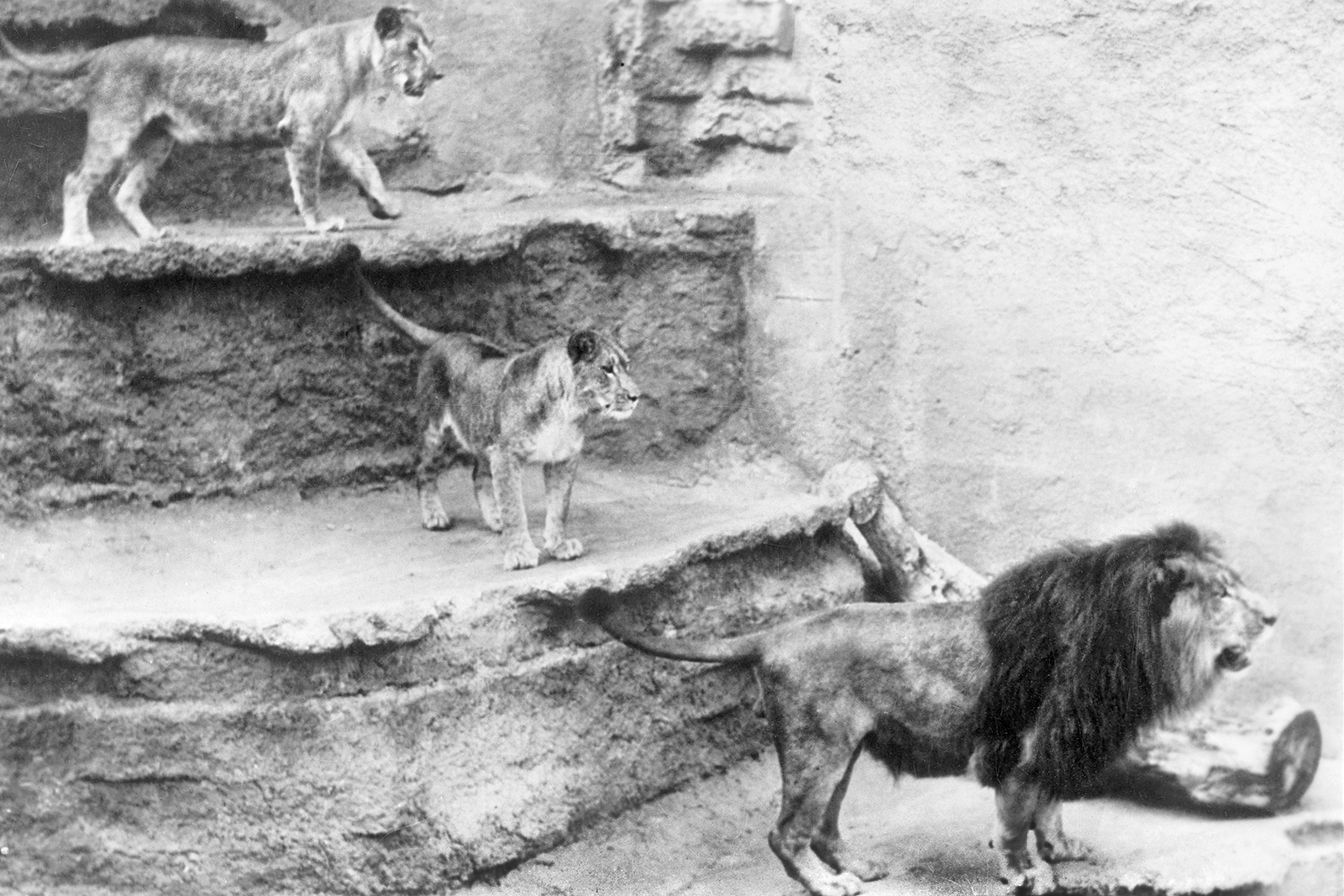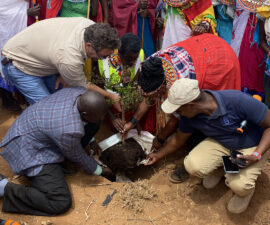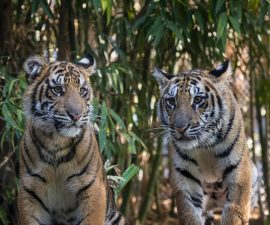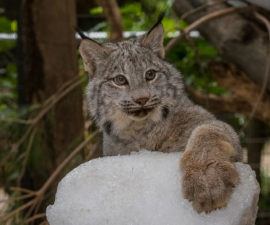From regal Rex to enchanting Miss Ellen, lions have been a major source of “pride” during our 100-year history, and these beautiful big cats continue to captivate guests at the Zoo and Safari Park.
BY Peggy Scott
Photography by SDZG
While the lion is widely regarded as the king of beasts, this regal feline also reigns supreme in San Diego Zoo lore. After all, as the story goes, “It began with a roar!” On that fateful day in 1916, upon hearing the roar of a lion in the menagerie left over from the 1915-1916 Panama-California Exposition, did Dr. Harry Wegeforth know that his inspiration for a zoo in San Diego would become his legacy to America’s Finest City, and to the zoological world? Over the past 100 years, many lions have graced the Zoo with their presence, and if there’s one thing that has been retained over a century, it’s the lion’s enduring role as a “mane” attraction.
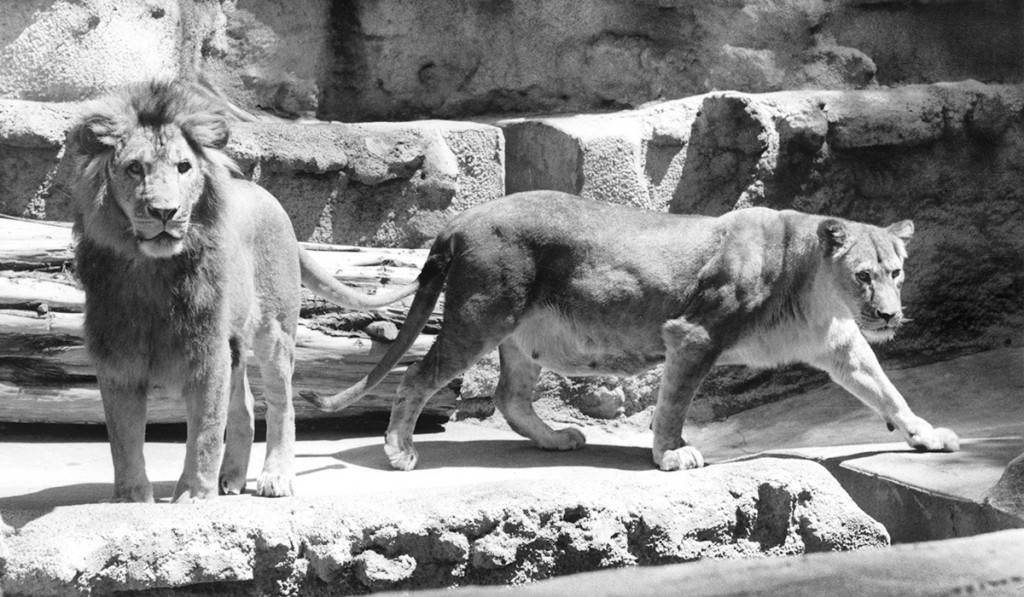
EVERYONE LIKED IKE (AND VICKY)
Ike and Vicky reigned over the Zoo in the 1950s.
Roars that Led to the Lore
While vociferous Rex (he of roaring fame) may have helped prompt the creation of the Zoo, his fellow felids played a role in making the place a “must-see.” The birth of the Zoo’s first-ever lion cubs, Faith, Hope, and Charity, in 1917 seemed to indicate that the big cats were doing pretty well in the foundling Zoo. Lions Prince, Cleopatra, and Rena were at the center of zookeeping history in 1923, when a donation from Zoo benefactor Ellen Browning Scripps funded the construction of the first two open-air grotto exhibits in the US—one for bears and the other for the Zoo’s pride of lions.
Prince was the picture of lion-esque manliness—except for one soft spot: his cubs. He calmly indulged those “little terrors” and their games of tug-the-tail and pounce-on-pop, even taking care to not let his heavy, drowsiness-laden head drop onto the little cubs as they snoozed, draped across his paws. Fatherhood certainly seemed to agree with Prince—he ended up siring 19 offspring! Another early lion, Babe, also possessed great patience for offspring and their penchant for tail biting. Lots of lion cubs were born in those early years—Cleopatra had 33 babies over an 8-year period! In our 100-year history, 130 lions have been born at the Zoo.
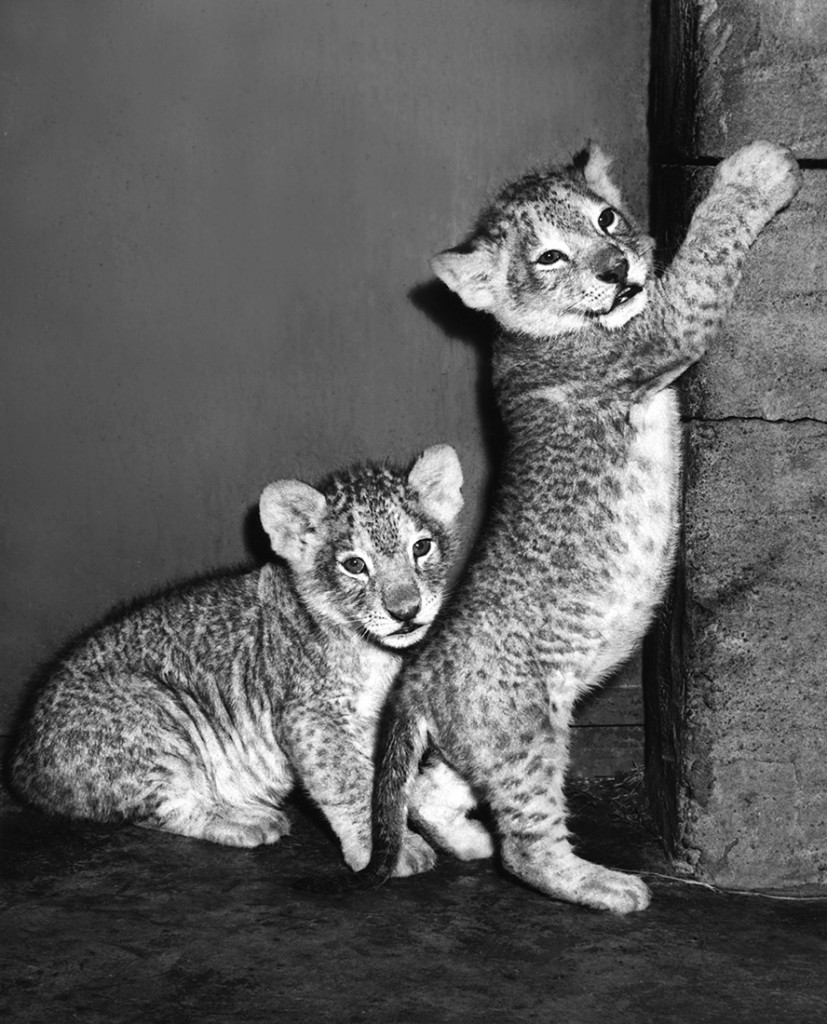
NEW ARRIVALS
The Zoo welcomed the birth of its first Masai lion cubs in 1953.
In 1941, Zoo staff would experience a new version of lion care—the hand raising of a cub. Little Sheba was rejected by her mother and ended up in the care of veterinary hospital attendant Emily Burlingame. Sheba was so attached to Emily that even after the lionness was grown, she thought white coats or dresses, which Emily wore, meant someone was bringing her a bottle.
The Zoo’s lion family tree branched out again in 1951, when Moja, Tatu, and Victoria—the Zoo’s first Masai lions—went on exhibit, coming to San Diego from the “Kenya Colony in British East Africa.” The newcomers settled in nicely, with Victoria giving birth to two cubs (sired by Moja) in July of 1953, and a female cub in April of 1955. Four lion cubs would mark another milestone for the Zoological Society of San Diego in 1983, as the Safari Park (formerly called the Wild Animal Park) welcomed its first birth of what were then known as Asiatic lions. The cubs, three males and a female, were born to mother Munda, and were an important contribution to our conservation efforts.
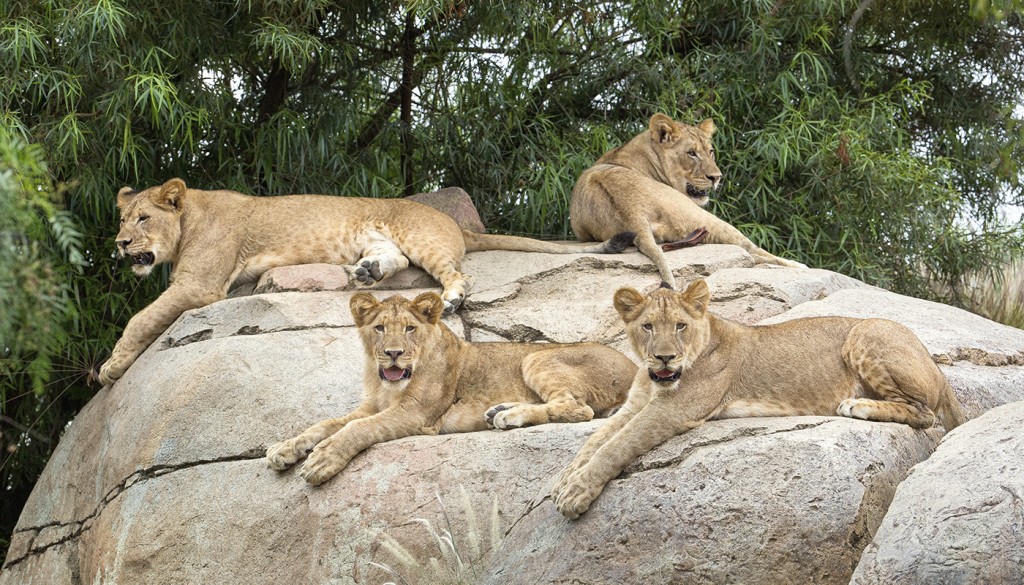
THE FANTASTIC FURRY FOUR
Evelyn, Miss Ellen, Ernest, and Marion were born at the Safari Park’s Lion Camp: The Sylvia G. Straton Lion Savanna in July of 2014.
Today’s Cats of Character
The San Diego Zoo Safari Park has had lions on exhibit since it opened in 1972, and it has welcomed 73 births over the years. In 2004, the Safari Park’s Lion Camp: The Sylvia G. Straton Lion Savanna opened, with six adorable young Transvaal lion cubs from a facility in South Africa. Three of them, now 12 years old, still live at Lion Camp: Izu, the regal male, playful Mina, and lioness-in-charge Oshana. Many of their 18 surviving cubs from over the years are now residing in other zoos, but 6 are still here. Two-year-old brother-and-sister duo Ken and Dixie, who were hand raised at Lion Camp, will move to other facilities in order to support genetic diversity. And given their personalities—Ken is a playful, loving boy, and Dixie is a firecracker—they are sure to win hearts wherever they go.
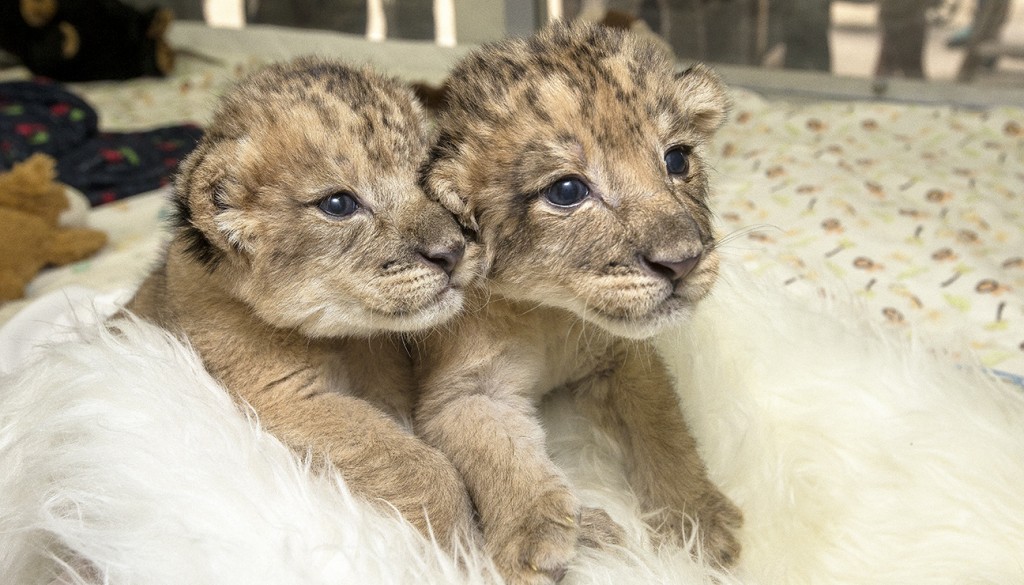
SIBLING REVELRY
Cubs Ken and Dixie spent their early days in the Safari Park’s Animal Care Center Nursery.
Lion Camp’s youngest lions, a foursome born in July of 2014, are keeping things quite lively. Outgoing Ernest is the curious one, and Miss Ellen likes being the beauty queen. Marion is the litter’s peacekeeper—unlike Evelyn, who is the boss of the group and takes after her mother, Oshana, with her feisty personality.
Not only are the Park’s lions iconic to keepers, staff, and guests, they’ve also contributed to pop culture. When working on The Lion King, Walt Disney Pictures’ animators visited the Safari Park and our lions for inspiration for the movie. (The Zoo’s meerkats and warthogs also influenced the Timon and Pumbaa characters.)
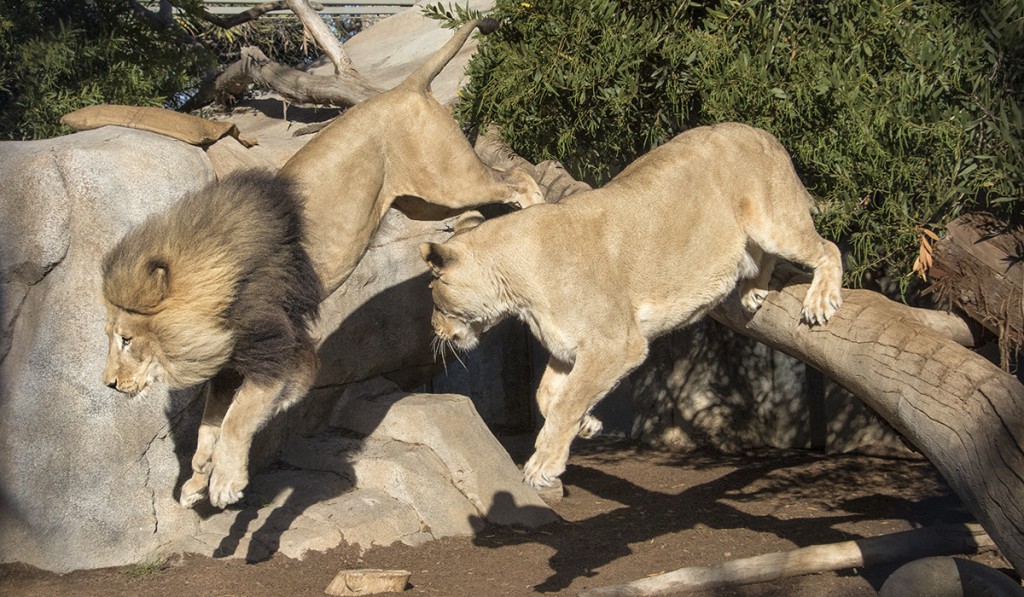
DYNAMIC DUO
M’bari and Etosha are a regal presence at the Zoo’s Harry and Grace Steele Elephant Odyssey.
Two of the original Lion Camp residents, M’bari and Etosha, now hold court in the Harry and Grace Steele Elephant Odyssey at the Zoo. At this “kingdom,” guests get close enough to count the cats’ whisker spots and bask in the lions’ golden gaze, and specially heated rocks make the perfect lounging spot for the king of beasts. Ever the maned monarch, M’bari awes visitors with his majestic bearing and late-afternoon bouts of roaring, while keepers describe Etosha as mellow and sweet.
We are proud of our lions and their key role in the Zoo’s story. A sculpture of Prince on the Zoo’s entrance plaza honors the iconic status of lions in San Diego Zoo history and makes for a memorable photo opportunity. To San Diegans, lions are symbolic of their zoo, and will be a source of much “pride” for the next 100 years and beyond.

